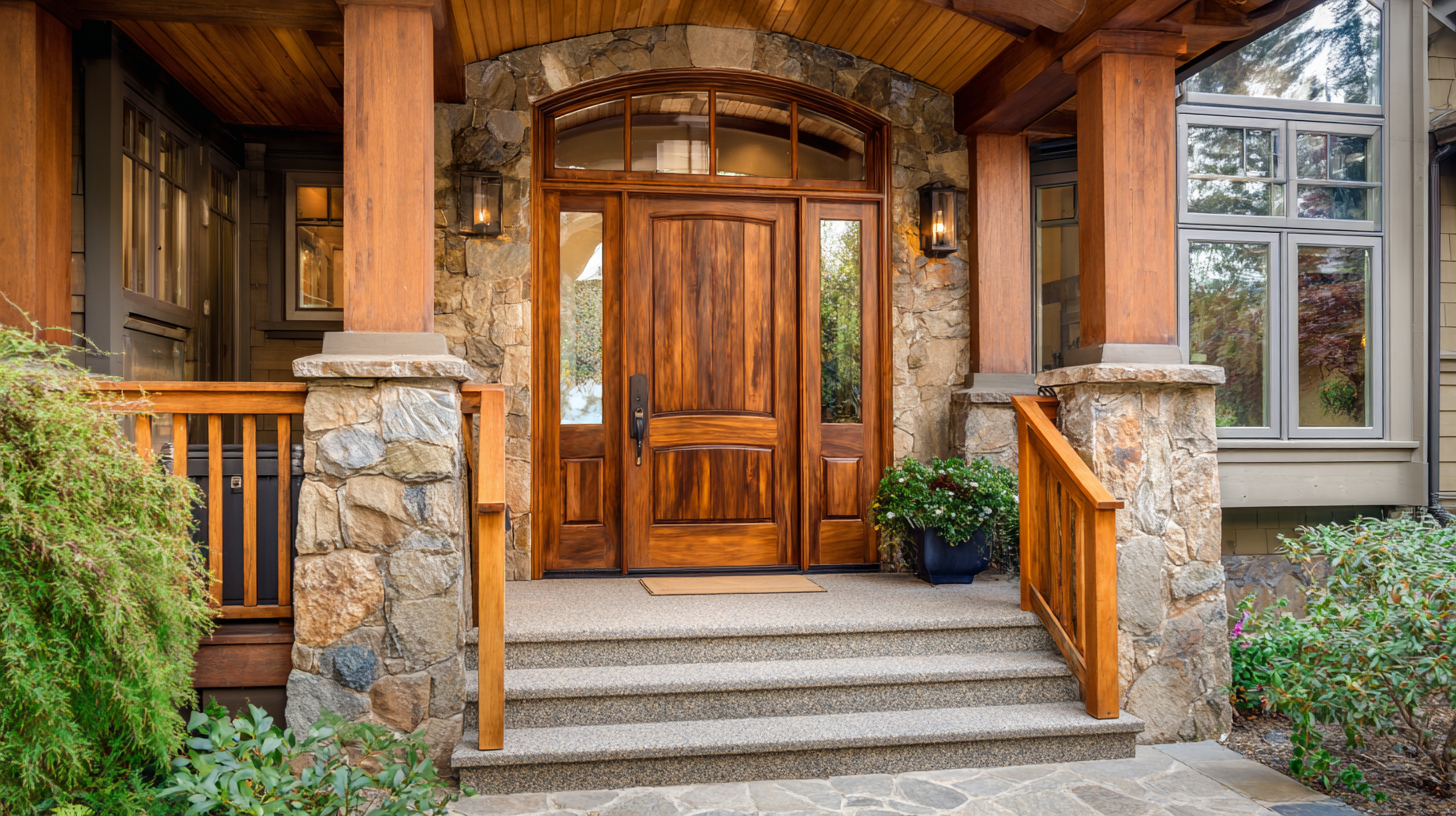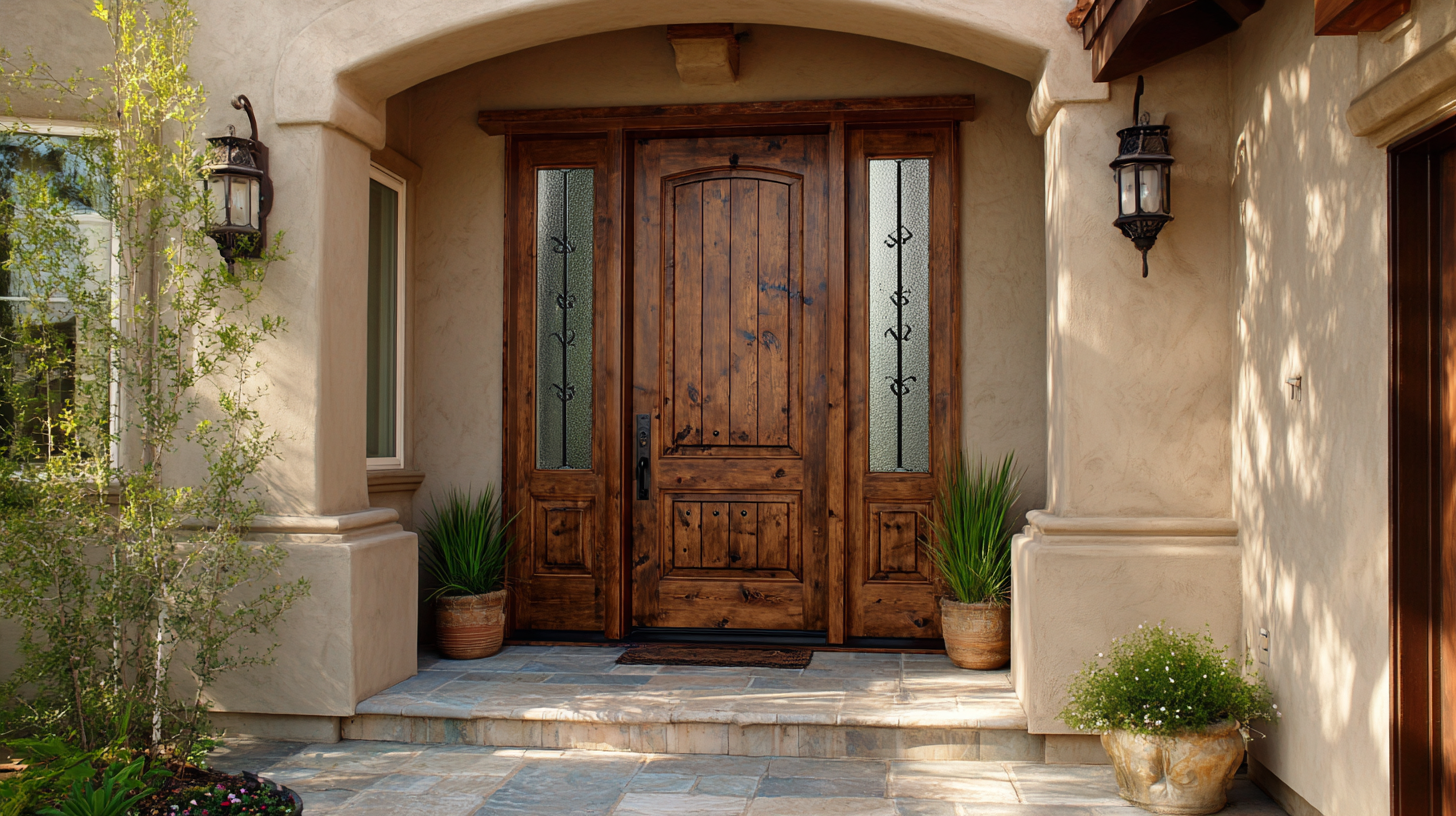7 Essential Tips for Choosing the Perfect Wood and Glass Front Door
 Choosing the right front door is a crucial decision for homeowners looking to enhance their home’s aesthetic and energy efficiency. A study by the National Association of Realtors highlights that a stylish entry door can significantly boost curb appeal, potentially increasing the property's value by up to 10%. Among various design options, a wood and glass front door stands out for its perfect combination of beauty and functionality. Not only does it provide an inviting entrance, but the natural insulation properties of wood, coupled with the elegant transparency of glass, can also contribute to energy savings. Moreover, according to the American Institute of Architects, front doors have emerged as a key element in home design trends, with wood and glass entries gaining popularity for their modern look and customizable options. With this in mind, selecting the perfect wood and glass front door requires careful consideration of style, durability, and energy efficiency to truly transform your entryway.
Choosing the right front door is a crucial decision for homeowners looking to enhance their home’s aesthetic and energy efficiency. A study by the National Association of Realtors highlights that a stylish entry door can significantly boost curb appeal, potentially increasing the property's value by up to 10%. Among various design options, a wood and glass front door stands out for its perfect combination of beauty and functionality. Not only does it provide an inviting entrance, but the natural insulation properties of wood, coupled with the elegant transparency of glass, can also contribute to energy savings. Moreover, according to the American Institute of Architects, front doors have emerged as a key element in home design trends, with wood and glass entries gaining popularity for their modern look and customizable options. With this in mind, selecting the perfect wood and glass front door requires careful consideration of style, durability, and energy efficiency to truly transform your entryway.
Choosing the Right Wood Type for Your Front Door: Key Characteristics to Consider
When selecting the perfect wood type for your front door, several key characteristics can significantly impact your choice. Durability and resistance to weather elements are crucial—hardwoods like oak, mahogany, and maple are excellent options due to their dense structure, which naturally resists warping and rotting. According to the Wood Identification and Properties Database (WIPD), mahogany boasts a Janka hardness rating of 1,500, indicating high resistance to denting, making it ideal for exterior applications.
Another factor to consider is the aesthetic appeal of the wood. Different species offer unique grain patterns and colors, which can enhance your home's curb appeal. For instance, Cherry wood develops a rich patina over time, while teak is known for its golden hue and natural oils, which provide additional weather resistance.
Tip: Always request samples before making a decision, as the color and grain can look different under varying lighting conditions.
Additionally, consider the maintenance requirements for each wood type. While some species may require regular sealing or staining to maintain their beauty, others, like cedar, possess natural oils that make them more resistant to moisture and insects.
Tip: Research or consult a professional regarding the maintenance involved to ensure that your choice aligns with your lifestyle and willingness to upkeep your door.
Understanding Glass Options: Selecting the Best Style and Thickness
When selecting the perfect wood and glass front door, understanding the various glass options is crucial for achieving both aesthetics and functionality. The style of the glass can significantly influence the overall appearance of your entrance.
Popular styles include clear, frosted, and patterned glass. Each option offers a different level of privacy and light transmission. For example, clear glass creates a welcoming feel and maximizes light, while frosted glass provides more privacy without sacrificing brightness, making it ideal for locations where you want to maintain a sense of openness without compromising security.
Thickness is another essential factor to consider when choosing glass for your front door. Thicker glass generally offers better durability and insulation, which is especially important in regions with extreme weather conditions. Typically, glass thickness ranges from 1/4 inch to 1 inch or more for added strength. It's essential to assess your specific needs regarding energy efficiency and durability to make an informed decision. Ultimately, selecting the right glass style and thickness can enhance the beauty of your home while ensuring it stands up to the test of time.
Balancing Aesthetic Appeal and Durability in Door Design
When selecting a front door that combines both aesthetic appeal and durability, it's essential to consider the materials used. Wood exudes warmth and charm, providing a classic look that enhances the curb appeal of any home. However, untreated wood can be susceptible to weathering, warping, and insect damage. To mitigate these issues, opt for high-quality, solid wood species such as mahogany or oak, or look for engineered wood products that offer increased resistance to environmental factors.
On the other hand, glass adds a modern touch to door design, allowing natural light to filter into your entryway. When incorporating glass elements, choose tempered or laminated glass for added strength and safety. Combining these materials can create a stunning visual contrast while ensuring longevity. Additionally, consider the door's finish and hardware; a durable finish will help protect against scratches and fading, while robust hardware will reinforce the door's structure, enhancing its overall durability. By balancing these elements, you can achieve a front door that is not only aesthetically pleasing but also built to withstand the elements.

Exploring Energy Efficiency: Insulation Benefits of Wood and Glass Doors
Choosing the right front door is not just about aesthetics; it significantly influences your home's energy efficiency, especially in regions like Canberra with extreme temperature fluctuations. The insulation properties of wood and glass doors can greatly enhance your home's thermal performance. Wood, known for its natural insulating qualities, combined with double or triple-glazed glass, creates a barrier that minimizes heat transfer. In fact, recent projects, such as the £6.1 million energy efficiency upgrades in Oldham, emphasize the importance of high-performance doors alongside insulated windows and smart heating controls to bolster energy conservation.
As the demand for sustainable building solutions increases, the global green building materials market is projected to reach an impressive volume of 1,271.6 million tons by 2034. This surge is indicative of a shift towards integrating energy-efficient designs in residential construction, where products like high-insulation front doors are becoming essential. Leveraging these advancements not only helps maintain comfortable indoor climates year-round but also contributes to reducing energy costs and environmental impact. Investing in the right wood and glass front door can be a smart step towards achieving a more energy-efficient home.
Maintenance Tips for Long-lasting Wood and Glass Doors
When investing in wood and glass front doors, understanding their maintenance needs is crucial to ensure longevity and aesthetic appeal. According to the Window and Door Manufacturers Association (WDMA), properly maintained wood doors can last over 30 years, while glass components can provide significant insulation benefits when kept in optimal condition. Regular checks for damage, wear, or moisture intrusion are essential to prolong the life of your door.
To maintain the integrity of your wood and glass doors, it is recommended to apply a protective sealant every few years. This can help prevent rot and warping in the wood, especially in climates with extreme temperature fluctuations. The National Association of Home Builders (NAHB) suggests inspecting caulking and weather stripping annually, as these elements are vital in keeping energy efficiency high; doors that are not properly sealed can lead to a 10% increase in energy costs. Regular cleaning of glass surfaces with non-abrasive cleaners will keep your doors looking pristine while ensuring the visibility and beauty of the glass remain unblemished.